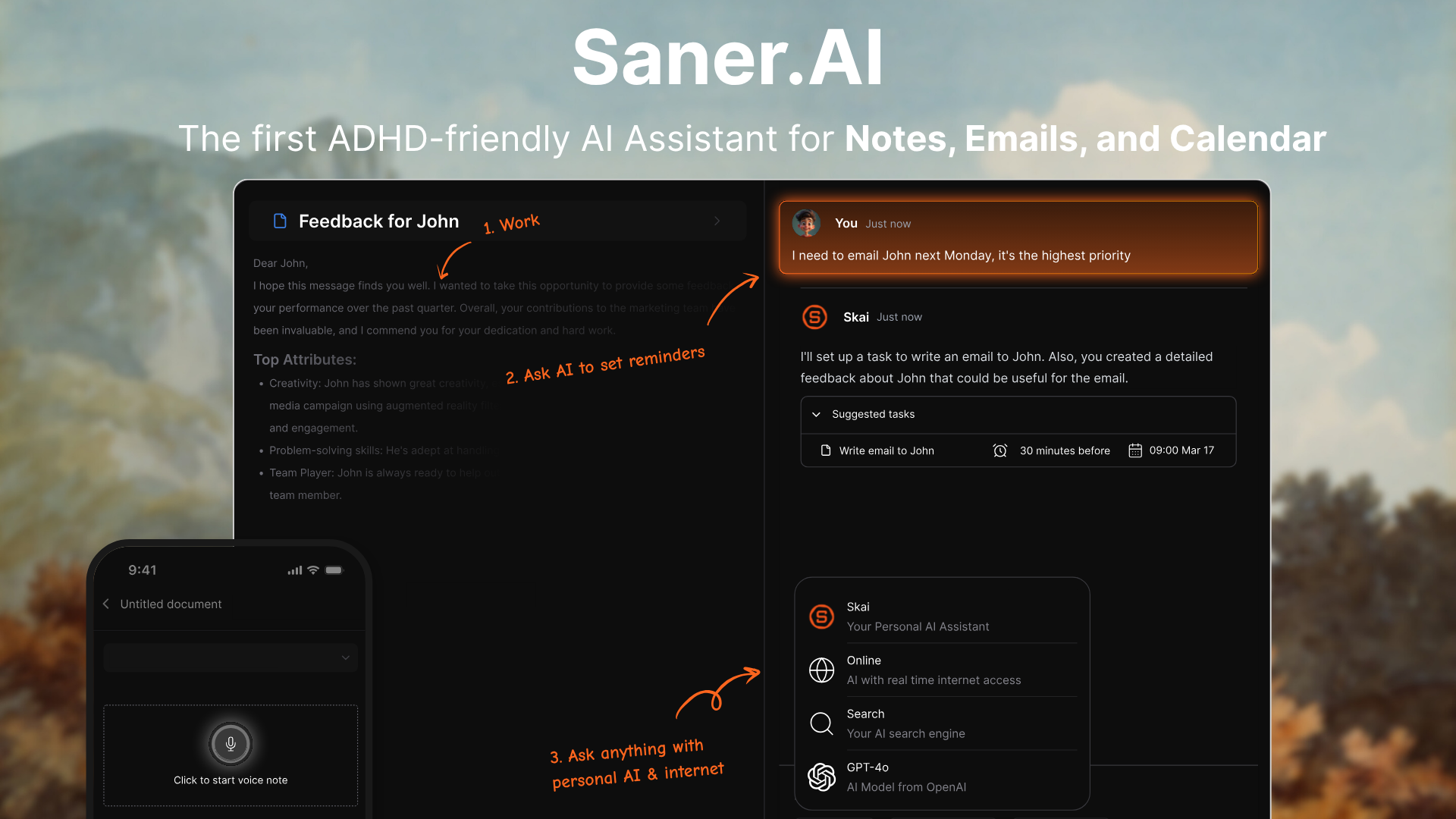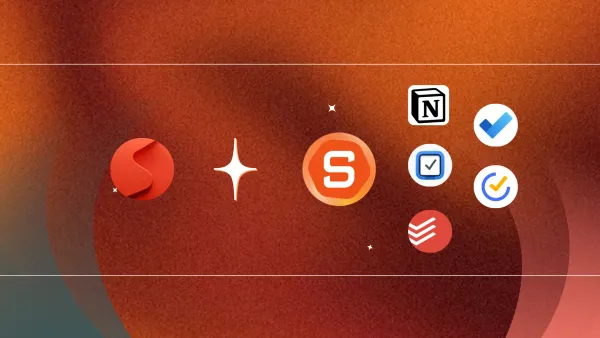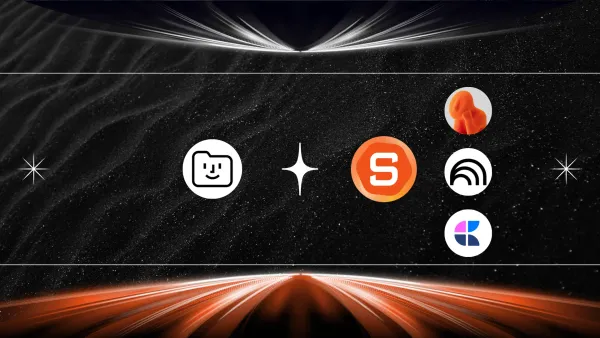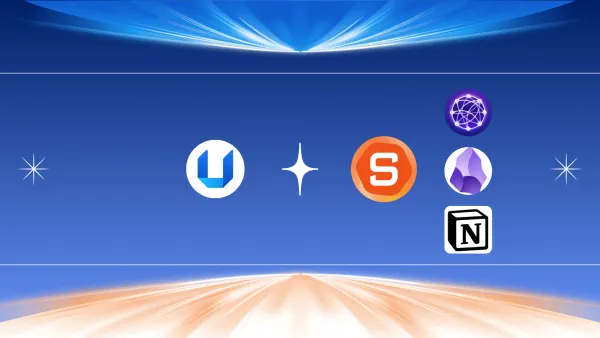Pomodoro Technique for ADHD: Breaking Down Big Tasks

Breaking Tasks into Manageable Chunks: The Pomodoro Technique for ADHD
"Hey, let’s focus for just a bit, and then we can relax!"
> That captures the essence of the Pomodoro technique
The Pomodoro Technique is a friendly and effective way to manage time and boost focus, especially for those with ADHD.
This method helps tackle challenges like time tracking and maintaining attention by breaking work into manageable chunks.
Let's see how we can apply it to our lives in this post 👇
1. What is the Pomodoro Technique?

The Pomodoro Technique, crafted by Francesco Cirillo in the 1980s, is a straightforward yet effective method to enhance productivity.
It uses a timer to break work into intervals, traditionally 25 minutes in length, separated by short breaks. Here’s a simple guide on how to implement this technique:
- Prepare Your Workspace: Start with a clear to-do list and a timer. You could use a traditional kitchen timer, your smartphone, or any digital timer.
- Work in Blocks: Set the timer for 25 minutes and dedicate this time to working on just one specific task. Avoid all distractions during this period.
- Take Short Breaks: Once the timer rings, take a 5-minute break. This is a great time to stretch, grab a coffee, or just relax your mind.
- Enjoy Longer Breaks: After completing four of these 25-minute blocks, known as "pomodoros," reward yourself with a longer break ranging from 15 to 30 minutes. This helps to recharge your batteries for the next round of tasks.
2. Benefits of the Pomodoro Technique for ADHD
The Pomodoro Technique offers several benefits for individuals with ADHD, including:
- Structured Work: The technique involves breaking down tasks into manageable intervals, which can help individuals with ADHD maintain focus and stay on track.
- Time Awareness: By setting a timer for a specific interval, individuals with ADHD can better understand and manage their time, which is particularly important for those who struggle with time blindness.
- Motivating: The Pomodoro Technique can be highly motivating for individuals with ADHD as it provides a sense of accomplishment and progress after each completed session, which can help build determination and motivation.
- Accountability: The technique encourages individuals to commit to a specific task for a set period, which can help them stay accountable and avoid procrastination.
- Preventing Burnout: By incorporating regular breaks into the work cycle, the Pomodoro Technique helps prevent burnout and maintain productivity throughout the day.
These benefits are particularly valuable for individuals with ADHD who often struggle with maintaining focus, managing time, and staying motivated.

3. How to apply the Pomodoro step-by-step
The 25-minute work sprints are the core of the method, but a Pomodoro practice also includes three rules for getting the most out of each interval.
1) Break down the big task
If you've got a hefty task that seems like it'll take more than four pomodoros, it's time to slice it up into smaller, more manageable pieces. This way, you can tackle each segment one at a time, making steady progress without feeling overwhelmed.
How do I break down a task into smaller tasks?
Here is a concise summary of the key points for breaking down a big task into smaller steps:
- Define your big task clearly to understand the overarching goal.
- Brainstorm all the sub-tasks that make up the larger goal using mind maps, checklists, or discussions.
- Prioritize the sub-tasks based on urgency, importance, and dependencies.
- Set SMART goals (specific, measurable, achievable, relevant, and time-bound) for each sub-task.
- Allocate the necessary resources, including time, tools, materials, skills, and knowledge for each sub-task.
- Start with the first sub-task and focus on one step at a time to build momentum.
- Monitor progress using checklists, time tracking, and celebrating milestones.
- Adapt and stay flexible to problem-solve obstacles and reevaluate priorities as needed.
- Combine related sub-tasks into phases or stages for more efficient management.
- Review the outcome, identify lessons learned, and celebrate your success upon completing the big task.
By breaking down big tasks into smaller, achievable steps and following this process, you can tackle even the most daunting projects more effectively.
For example, let's take a common task and break it down into subtasks using the principles you've outlined.
We'll use the example of planning a vacation.
- Big Task: Plan a Vacation
- Define the big task
- Goal: Organize a 7-day trip for a family of four in June.
- Brainstorm Sub-tasks:
- Research destinations suitable for families.
- Set a budget for the trip.
- Book flights.
- Find accommodation.
- Plan daily activities.
- Arrange transportation (rental car, train tickets).
- Check passport validity and apply for visas if necessary.
- Purchase travel insurance.
- Pack for the trip.
- Prioritize Sub-tasks:
- First, research destinations and set a budget as these will guide all other decisions.
- Next, book flights and accommodation as prices can increase or become unavailable.
- Then, plan daily activities and arrange in-country transportation.
- Close to the departure date, check travel documents, purchase insurance, and pack.
- Set SMART Goals for Each Sub-task:
- Research and set a budget by the end of this week: Identify top 3 destinations and determine an overall budget.
- Book flights and accommodation within the next two weeks: Ensure all bookings are within budget and offer flexibility for changes.
- Allocate Resources:
- Use travel websites and guides for research.
- Allocate 2 hours daily over the next week for initial planning.
- Consult with family members for preferences and special needs.
- Start with the First Sub-task:
- Begin with destination research and budget setting.
- Monitor Progress:
- Keep a checklist of each sub-task.
- Use a calendar to track deadlines for bookings and payments.
- Adapt and Stay Flexible:
- Be ready to adjust plans based on availability, budget changes, or family preferences.
- Combine Related Sub-tasks into Phases:
- Phase 1: Research and budgeting.
- Phase 2: Bookings and reservations.
- Phase 3: Pre-travel preparations (documents, packing).
- Review:
- Review the completed plans with your family.
By breaking down the task of planning a vacation into these detailed subtasks and following the structured approach, the process becomes more manageable and less overwhelming.
Each step builds on the previous one, leading to a well-organized and enjoyable trip.
2) Bundle Up the Small Stuff
Got some mini-tasks that won't even fill up a full pomodoro?
Group them together! For instance, you could combine "write rent check," "set vet appointment," and "read Pomodoro article" into one productive session.
3) Respect the Pomodoro
Once you start that timer, it’s like launching a space mission - there’s no turning back until you land.
By following these steps, the Pomodoro Technique helps you maintain focus and momentum throughout your workday, promoting efficiency and reducing burnout.
4. Challenges of the Pomodoro Technique
Although there are many advantages to using the Pomodoro Technique, there are some common challenges that individuals with ADHD may face as well.
These can include getting distracted and going off task before time is up, forgetting to set the timer, losing motivation, or taking longer breaks because of poor time management. Implementing reminders and accountability can help manage some of these challenges.
Here is how to overcome challenges individuals with ADHD may face when using the Pomodoro Technique:

- Manage Distractions: It's super important to minimize any distractions that can pull your focus away. Try putting your phone on “do not disturb” mode, and consider using noise-canceling headphones or listening to calming music if that helps you concentrate better.
- Be Flexible: Everyone’s different, so feel free to adjust the length of your work sessions and breaks to better suit your needs and attention span. This customization can help reduce frustration and make the technique more effective for you. If you find you need a bit longer to recharge, it’s perfectly okay to extend your breaks.
- Start Slow: Jumping into too much at once can be overwhelming. Begin with just 2-3 Pomodoros per task. This way, you can gradually build up your stamina and get more comfortable with the technique without feeling too pressured.
- Use Phone Alarms: To help remember to start or stop your Pomodoro timers, set reminders or alarms on your phone. This little trick lets you fully immerse yourself in your task without having to watch the clock.
- Find an Accountability Buddy: Pair up with a friend or a colleague who can work alongside you. This isn’t just about keeping each other on track - it’s also about making the process more enjoyable and less isolating.
- Move Around: During your breaks, resist the urge to stay glued to your screen. Stand up, stretch, or take a brief walk. Moving around can help boost your blood circulation and sharpen your focus for the next round of work.
5. Temptations to Avoid When Using the Pomodoro Technique
It may feel tempting to procrastinate using the Pomodoro Technique. Those with ADHD may cut breaks short or get distracted by notifications.
It’s important to pay attention and notice when you begin to feel frustrated, impatient, or justify delays/procrastination. This can lead to further spiraling into unhelpful symptoms, but becoming aware of these red flags will help you self-correct.
- Stay True to the Timer: It might be tempting to keep working past the timer if you're in the groove, but sticking to the planned breaks is recommended. Overextending yourself can lead to burnout, making it tougher to tackle the next task with fresh energy.
- Ease Into It: There's no need to ramp up the number of Pomodoros too quickly. If you start feeling overwhelmed, it's perfectly fine to take it slow. Remember, this is about finding a rhythm that works for you, not pushing yourself to the limit.
- Stick to Your Schedule: If you find yourself falling behind, try not to push out your deadlines. Instead, refocus your efforts on the next Pomodoro. This can help you maintain momentum without the added stress of shifting timelines.
- Be Kind to Yourself: Not finishing a task within one Pomodoro isn't a failure, it's an opportunity to break it down into smaller, more manageable parts. Celebrate what you have accomplished rather than beating yourself up. Negative self-talk can lead to avoidance and procrastination, so keep your inner dialogue positive and supportive.
6. Apps for the Pomodoro Technique ADHD
1. Breaking Down Tasks: Saner.AI
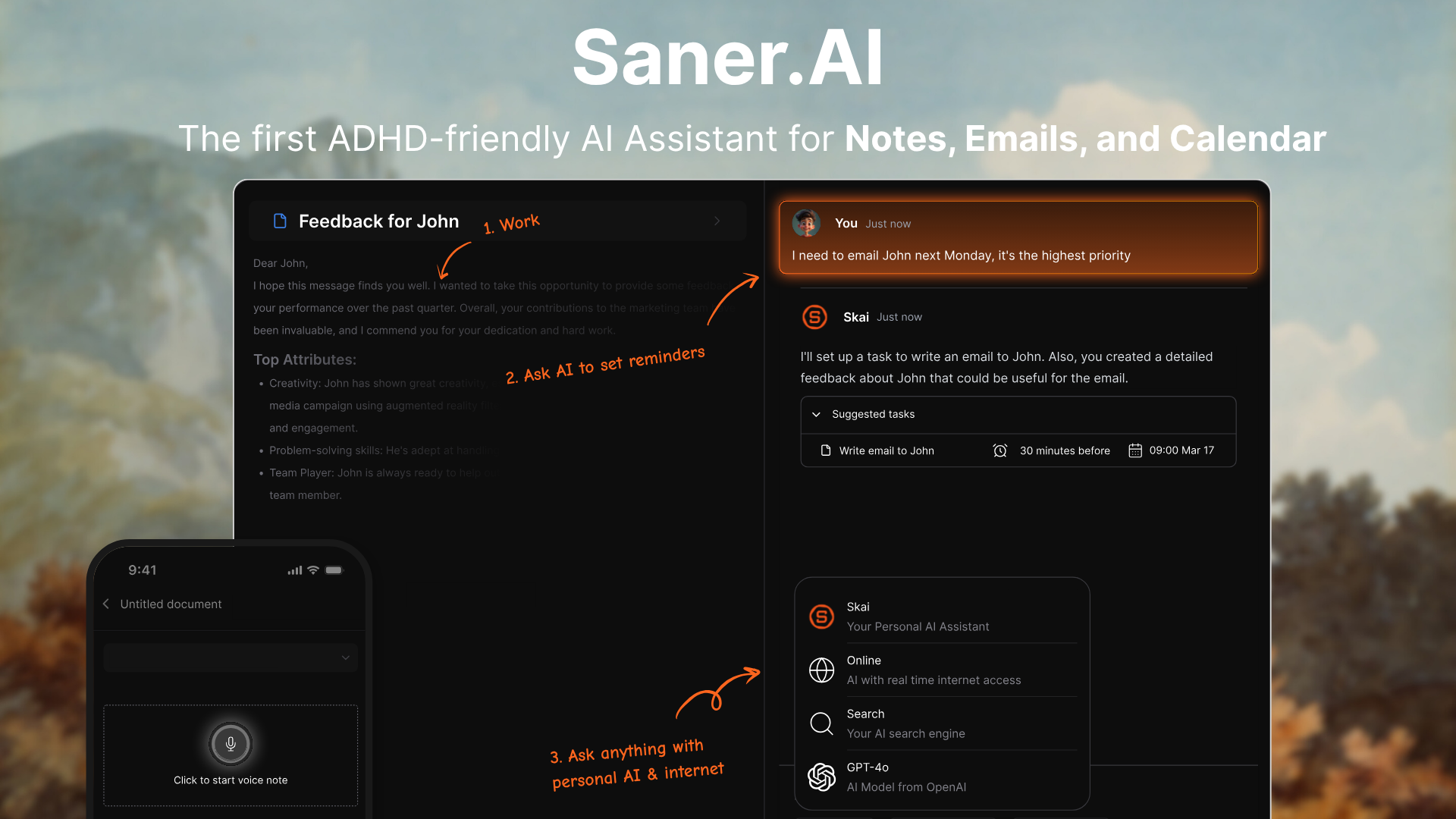
Saner.AI is an AI assistant built for folks who get overwhelmed with messy notes and vague to-dos. It helps you break down tasks, make sense of your thoughts, and stay focused - all in one clean workspace.
Key features
- An AI assistant that breaks down big tasks into small, actionable steps
- Daily planning: Scans your inbox, notes, and calendar to auto-create a morning plan
- Smart note search with natural language and tags
- Focus mode to cut distractions and stay on track
- Web clipper and mobile app for capturing thoughts on the go
What I liked
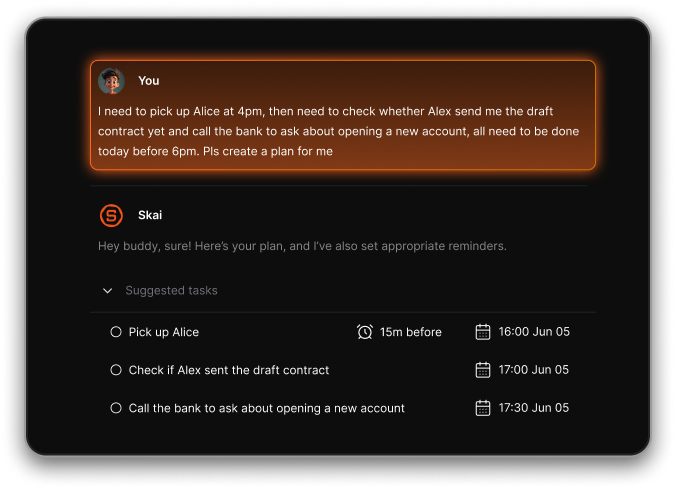
- I love how the AI turns vague ideas into step-by-step tasks—it’s honestly the best part
- The design is clean and calming, great for ADHD brains like mine
- I don’t have to switch between five apps anymore—everything lives in one workspace
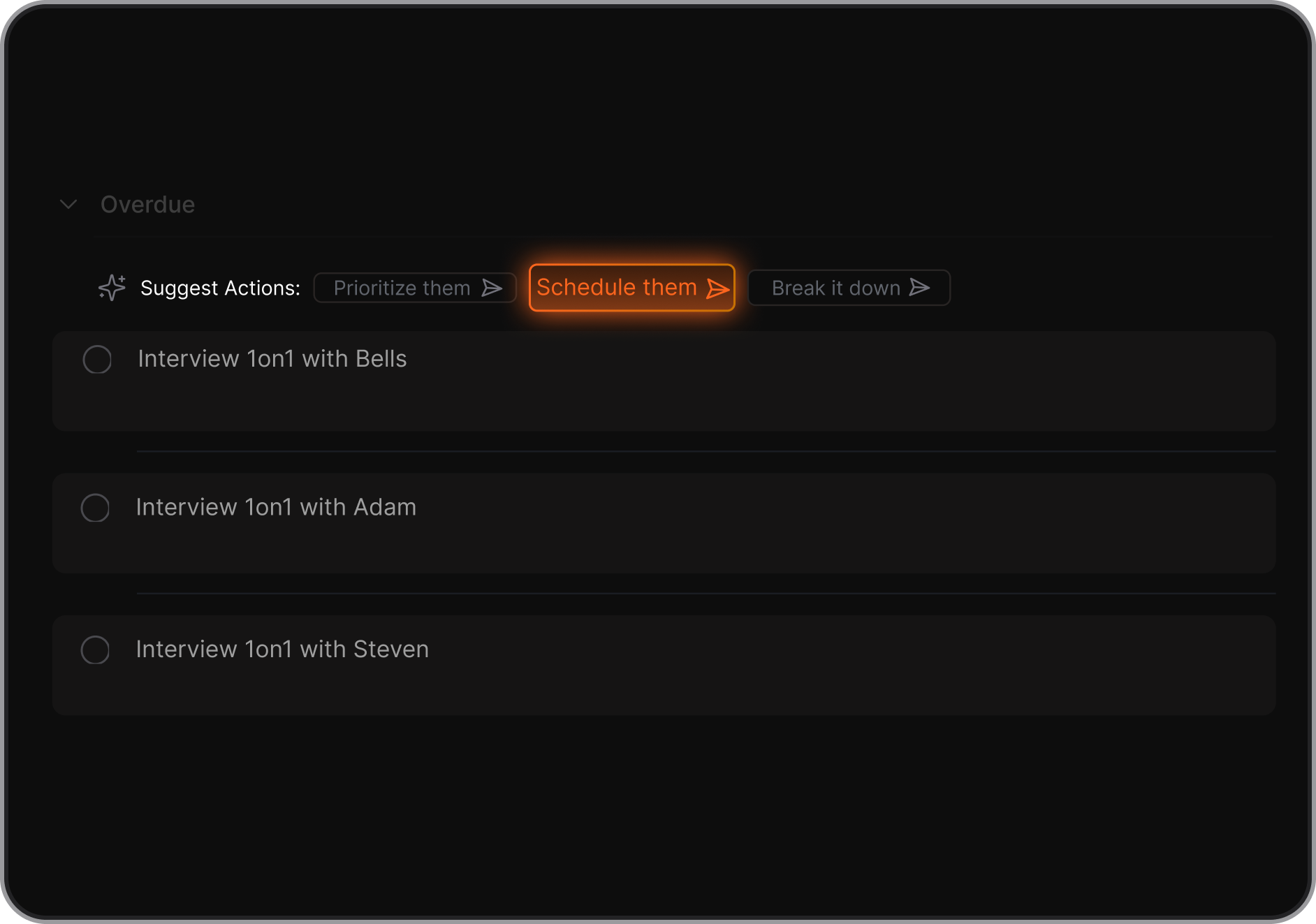
Cons
- Not ideal for large teams or project timelines — no Gantt charts or complex task dependencies.
Pricing
- Free
- Starter: Monthly at $8/month, Annually at $6/month (with early user discount)
- Standard: Monthly at $16/month, Annually at $12/month (with early user discount)
Who is it suitable for?
- Anyone who wants a calm, intelligent space to break down tasks, think clearly, and keep everything in one place, especially if you struggle with overwhelm or context switching.
Saner.AI review

How to start using it?
- Go to saner.ai, sign up for free, and start by asking the AI to help you break down a task you've been avoiding.
Break down, prioritize the tasks in seconds
2. Set time: Pomodoro Apps

Pomodoro apps like Focus Keeper, Forest app, Focus To-Do, and Focus Booster are designed to facilitate time management using the Pomodoro Technique. They typically include features such as customizable work sessions, break intervals, task tracking, and visual cues to enhance focus and productivity.
Price
Prices can range from $1.99 to $6.99 per month, depending on the app and available features.
Conclusion
To wrap up, the Pomodoro Technique is a fantastic tool for anyone with ADHD looking to boost their productivity and get a handle on their tasks.
Breaking work into focused 25-minute chunks with well-timed breaks helps keep your concentration sharp and your motivation high.
This method is especially great if you find time management and procrastination challenging. So, if you're looking for a structured yet flexible way to manage your day, give this technique a try; it might just be the life changer you need!
FAQ for Breaking Down Tasks and the Pomodoro Technique:
1. What is the Pomodoro Technique?
The Pomodoro Technique is a time management method that breaks work into short, focused intervals - typically 25 minutes - called Pomodoros, followed by a 5-minute break.
After four Pomodoros, you take a longer break (15–30 minutes). This cycle helps reduce mental fatigue, maintain momentum, and stay on track, especially for people who struggle with focus.
2. Why is the Pomodoro Technique helpful for ADHD?
People with ADHD often face two big challenges:
- Starting tasks (task initiation)
- Sustaining focus (mental endurance)
The Pomodoro Technique helps by:
- Creating a low-pressure way to start (it’s just 25 minutes!)
- Offering frequent, guilt-free breaks to avoid burnout
- Building a rhythm that makes work feel more doable, not overwhelming
3. How does the Pomodoro Technique break down tasks for ADHD brains?
Here’s how the method helps break big tasks into ADHD-friendly chunks:
- Micro-commitments: You’re not writing a report—you’re doing one Pomodoro of writing.
- Clear stopping points: No need to “push through” endlessly; breaks are built in.
- Natural urgency: The timer creates a light sense of focus without panic.
This turns vague, stressful tasks into short, doable sprints.
4. What’s the best way to use the Pomodoro Technique for ADHD?
Start with these tips tailored for ADHD:
✅ Use a visual timer or app that gives audio cues
✅ Break tasks into subtasks before starting
✅ Keep a “distraction pad” nearby to jot down off-topic thoughts
✅ Try a 15/5 or 20/5 interval if 25 feels too long
✅ Treat breaks as rewards (not chores!)
Apps like Focus To-Do, Forest, and Saner.AI (which understands your notes and tasks) can automate Pomodoro cycles and reduce friction.
5. Can the Pomodoro Technique be too rigid for ADHD?
Yes - and that’s okay.
Some ADHD folks may find strict 25-minute blocks too long, or the pressure of a ticking clock overwhelming. If that’s you:
- Try shorter sprints (like 10 or 15 minutes)
- Allow flexible breaks—stand, stretch, switch contexts
- Use “reverse Pomodoros” (start with a break, then work!)
The goal is rhythm, not rigidity. Customize it to your brain.
6. What if I hyperfocus and forget the timer?
That’s common with ADHD.
Try this:
- Use smart timers that pause your screen or play a chime
- Set a visual cue, , like a lava lamp or light strip that changes every 25 minutes
- Use an app like Saner.AI that nudges you when your focus session ends
The key is building awareness without breaking your flow.
7. Is the Pomodoro Technique enough by itself?
For many with ADHD, Pomodoro is a great start, but not a full system. Pair it with:
- A task management tool that breaks down projects
- A calendar that schedules focus blocks
- Reminders that adapt to your attention span
Tools like Saner.AI combine AI task breakdown with Pomodoro-style reminders, making it easier to act on ideas instead of just writing them down.
8. What are ADHD-friendly alternatives to Pomodoro?
If traditional Pomodoros aren’t your jam, try:
- Time blocking: Reserve bigger chunks for deep work
- Body doubling: Work alongside someone for accountability
- The 5-Minute Rule: Commit to just starting a task for 5 minutes
- The Flowtime Technique: Track how long you can naturally focus, then rest
Experiment until something clicks. The best system is the one that works for you.
9. What's the best ADHD Pomodoro timer app?
Top picks for ADHD minds:
- Focus To-Do – Simple Pomodoro + task list
- Forest – Grow trees as you focus
- Saner.AI – Breaks down notes and tasks into Pomodoro-ready actions
Look for apps that reduce friction, not just track time.
10. Final Thoughts: Is the Pomodoro Technique worth trying for ADHD?
Absolutely. Even if you adjust it, the spirit of Pomodoro - short bursts, clear breaks, focused flow - is ADHD-friendly by design.
Start small. One timer. One task. One step closer to clarity.

